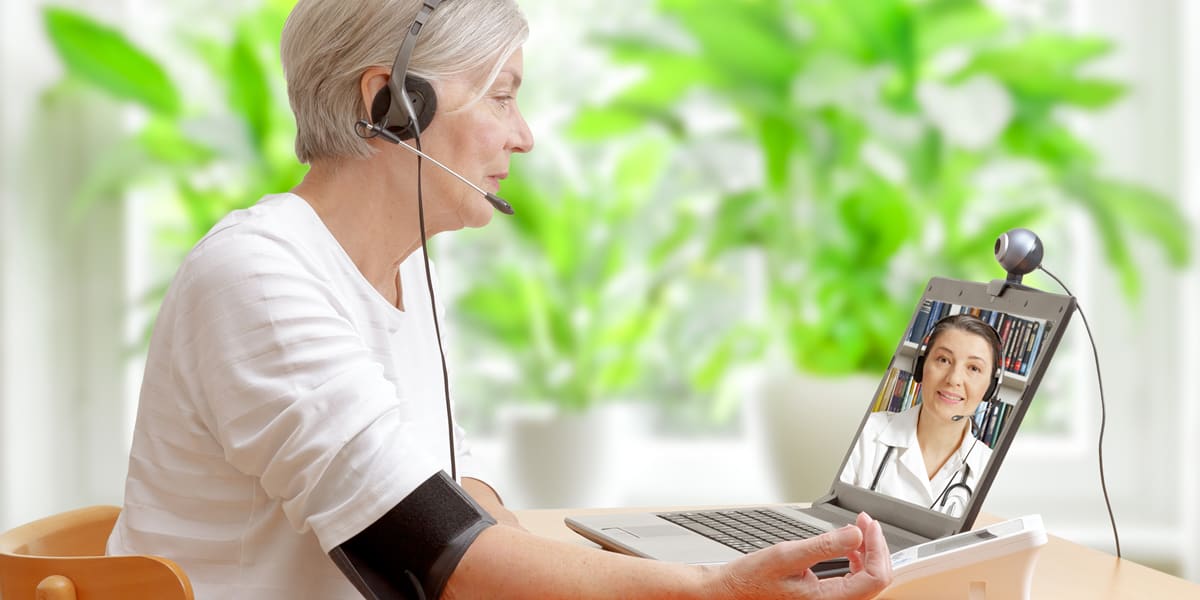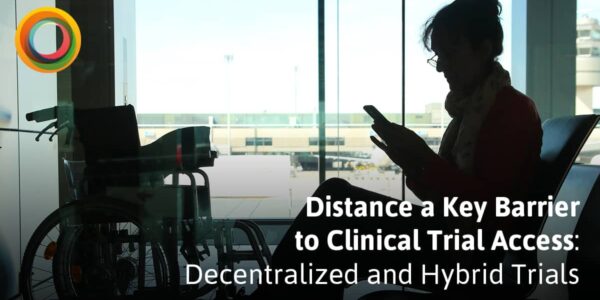
Effective communication is essential for patient engagement and retention during a clinical trial – especially as more trials are moving to virtual or decentralised models.
As social media and digital patient forums continue to grow in popularity, patients and advocates can more easily communicate with each other publicly. Patients’ voices are getting louder, and the patient experience has a platform like never before.
While patient safety and physical wellbeing have always been paramount when it comes to clinical trial design, effective communication and the patient experience hasn’t historically been prioritised in the same way.
This has to change, as poor communication can have a huge impact on the outcome of a trial, costing sponsors in lost time and revenue. Confusion around processes and protocols is a key reason patients drop out of a study, and communication is vital for building trust at every stage of the clinical journey.
Here, we’ll look at common communication shortfalls, and explore the importance of effective communication in improving the patient experience and boosting the success of your clinical trial.
Why effective patient communication matters
In our mdWebinar on patient experience Nuala Ryan, Clinical Research Consultant and Patient Advocate, stressed the importance of effective communication with the increased complexity of protocols in clinical trials.
Ryan said: “If you look at what’s involved in the procedures and objectives, I think [clinical trials] demand more of patients in terms of their commitment. That’s why more support is needed for patients – because a lot more is required now than before.”
Of course, it’s not enough to simply communicate a patient’s commitment, the protocols, and logistics – they must be engaged consistently, human-to-human, throughout the trial. This is particularly important when it comes to decentralised and virtual trials, as digital communication bridges the gap caused by the lack of face-to-face interaction.
To build relationships in the virtual space, we must find ways to check-in with patients virtually. We can do this through personalised apps, video conferences, telemedicine and video diaries, and ensure the nurses who visit patients in their own home are fully trained to deliver exceptional patient experiences. We must listen first, and use the insights we gain from the patients to inform how we approach each stage of the journey.
Tips for effective patient communication
An effective patient communication strategy takes into account all stages of the clinical journey – starting with protocol design. Studies that are created to meet the needs of patients are more successful. The patient understands the wider benefits and impact of their involvement in the trial, and they know what to expect at every stage.
Great communication makes clinical trial participation feel easier, as patients are clear on what’s required of them, have the opportunity to voice their concerns, and receive clear instruction and reassurance from the offset.
The core principles of exceptional patient communication are:
- Minimise jargon – avoid complex clinical terms where possible, and always use the simplest explanation of any process or procedure. If the patient wants more in-depth or complex information, make it clear that they can request this.
- Be specific – provide clear, step-by-step instructions for every process and always specify exactly what will be involved and what’s expected of the patient. It is always better to give more information than not enough.
- Use repetition – repetition helps reinforce key information. Ensure that core messages are highlighted and stated more than once.
- Check patient understanding – when you’ve explained something or provided information, check-in with patients. Perhaps ask them to repeat back what they understood, sit with them as they walk through the process, and ensure they have a contact who is available for them 24/7 during their participation should they run into any issues.
In our first mdWebinar Rhonda Henry, VP of Patient Centred Trials at PPD, shared a real-life example of how personal connection with patients had a positive impact on a trial’s success.
Henry said: ”[One study] added telemedicine to maintain the physician’s relationship with the patient – this resulted in less than 10% non-compliance with daily diary completion which was a primary endpoint for that study. This shows how, even in a study that has a lot of patient-centric strategies and solutions, personal connection helps mitigate risk.
Despite advances in technology, written communication remains the most common method of communication between healthcare professionals and their patients. However, written communication is more likely to be inefficient – it may be open to interpretation, is one-way, and often depends on a certain level of health literacy and understanding.
To effectively engage patients, communication needs to be personalised, two-way and – where possible – in real-time. This might include regular check-ins by video call or telephone, or a combined approach allowing the patient to feedback or ask questions surrounding any literature they have received
Treat patients as investors in clinical trials
Clinical trial participants are invested in a study for many reasons. They might be participating as a means of treatment, or they want to play a part in making lives better for others with their condition now and in the future.
Patients who are actively involved in advocacy work and trial participation do it because they care – and this can be leveraged by CROs in informing patient communication strategies.
As Andrew Schorr, Co-Founder of Patient Power, said in our mdWebinar on improving patient experience: “One of the things that’s lacking in trials today and for many years, is treating patients like investors. What I mean by that is respect, communication, keeping people informed.
“Asking questions like how’s the trial going overall? What is your role in it? What are the goals of the trial? Where are we trying to get to? How can you make a difference? What’s expected of you along the way? That often is not done. And of course, we are not guinea pigs. Going back over many years, that’s the way people felt, just as a number rather than a person and an investor.”
CROs must ensure processes are in place to check-in consistently with patients, creating a feedback loop that addresses and issues or concerns as they go. This improves overall experience and keeps patients invested in the study process and outcome, going some way to prevent early drop-outs.
Improving communication during patient journey
Putting patients at the forefront of conversations should be the goal of every healthcare interaction, meaning every interaction should be approached with the patient’s individual needs in mind.
As Rhonda Henry said in our mdWebinar: “[We need to be] checking in [with patients] to say, “Hey, look, how are you getting on? Do you have any questions? Do you understand your technology? Oh, I noticed you didn’t fill out your diary today. Please don’t forget.”
“Things like that will help increase the adherence and the acceptance of this new norm, but also ensure that patients feel connected and valued and supported in their participation.”
Key points in the patient journey where communication matters most are:
- Explaining processes in depth while onboarding, including additional or unfamiliar measures that may be in place for decentralised trials.
- Checking in with patients at regular intervals to offer a space for questions, explicitly enquire about any issues, ask whether they need anything, or make them aware of additional support.
- Appreciation at the end of the trial – acknowledge the role patients have played in their trial, thank them for it, and ensure they know they’re appreciated. It’s simple, but this can make a huge difference to the patient experience.
- Sharing results – as we said, patients are investors. Keep participants updated on the outcome of the study, so that they can see the difference they have made.
As Aidan Gannon, Head of Innovation and Client Services at Longboat Clinical, said in a mdWebinar: “You’ve got to give patients some appreciation… One thing that came up again and again in our focus groups was providing the results of the study back to the patient. That should be a matter of fact that it’s just done always, every time, and that’s not being done.”
Technology and communication
Technology is an undeniably effective tool for communication – from video calling to automated SMS reminders to dedicated apps for sharing essential information and facilitating regular check-ins.
In our mdWebinar on the use of technology in clinical trials, Aidan Gannon, Head of Innovation and Client Services at Longboat Clinical, highlighted the importance of user experience when it comes to technology used in clinical trials.
He said: “We don’t make interfaces easy to use or beautiful in many cases. We need, as an industry, to improve on that. No one wants to use an interface that they can’t understand or that just doesn’t appeal to them visually, so we need to be better at that.”
When using technology in your trials, here are some things to consider:
- Digital education – do you need to explain how this technology works to your patients? Are they likely to be able to use it intuitively, or does it need step by step instructions? Does it integrate into technology they already use, or do they need to learn to use an entirely new piece of tech?
- Patient expectations of technology – as ‘digital consumers’ most patients will be used to using smartphones, apps, or Bluetooth devices, but this comes with a level of expectation in terms of each of use, reliability and workability. Does your tech meet these expectations?
- Technological integration – does your technology integrate easily into peoples’ lives? For example, is it compatible with their smartphone, watch, or other devices? Is it too intrusive, or burdensome to use? Can it be linked to other devices to make sharing information easier, or to provide reminders?
If technology is to be used as a tool for communication, it must be an enabler and not a barrier.
Effective communication unlocks the benefits of patient-centred trials
Effective communication is vital to a patient-centred approach to clinical trial design.
This is not just about ensuring trial logistics are designed in a way that reduces financial and travel burdens on participants or that technology can streamline and automate manual processes.
True patient-centricity means patients feel involved, heard and appreciated for their role in the clinical journey – not simply following processes and being subject to procedures they don’t fully understand.
Only when communication is managed well at every stage of the clinical trial can we claim a trial to be patient-centred, and unlock the full benefits of a patient-first approach to trial design.
Think remarkable. Expect remarkable. BE remarkable.
We deliver remarkable patient experiences that improve clinical trial outcomes.
We empower healthcare providers with next-generation care management tools and technologies.
We help CROs deliver high-performance patient experience management, and support pharma / biotech to attract, engage, and maintain patient participation in clinical trials.
Remarkable means the right people, the right technologies and the right systems to deliver the best possible outcomes for you, your patients, and your clinical trial.
Let’s make your next study remarkable. Contact us now to discuss how.



